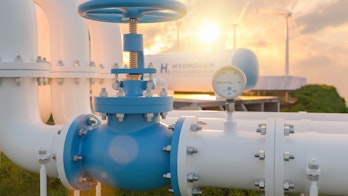Reports
-
Global Hydrogen Review 2024
Fuel report — October 2024

-
Northwest European Hydrogen Monitor 2024
Fuel report — April 2024

-
The Role of Carbon Credits in Scaling Up Innovative Clean Energy Technologies
How high-quality carbon credits could accelerate the adoption of low-emissions hydrogen, sustainable aviation fuels and direct air capture
Technology report — April 2024

-
Renewables 2023
Analysis and forecasts to 2028
Fuel report — January 2024

-
Global Hydrogen Review 2023
Technology report — September 2023

-
Breakthrough Agenda Report 2023
Report — September 2023

-
Transitioning India’s Road Transport Sector
Realising climate and air quality benefits
Country report — July 2023

-
Renewable Hydrogen from Oman
A producer economy in transition
Country report — June 2023

-
Towards hydrogen definitions based on their emissions intensity
Technology report — April 2023

-
Hydrogen Patents for a Clean Energy Future
A global trend analysis of innovation along hydrogen value chains
Fuel report — January 2023

-
How much will renewable hydrogen production drive demand for new renewable energy capacity by 2027?
Fuel report — December 2022
-
Northwest European Hydrogen Monitor 2022
Fuel report — November 2022

-
Opportunities for Hydrogen Production with CCUS in China
Technology report — November 2022

-
Global Hydrogen Review 2022
Technology report — September 2022

-
Breakthrough Agenda Report 2022
Accelerating sector transitions through stronger international collaboration
Report — September 2022

-
Technology and Innovation Pathways for Zero-carbon-ready Buildings by 2030
A strategic vision from the IEA Technology Collaboration Programmes
Technology report — September 2022
-
Residential behaviour changes lead to a reduction in heating and cooling energy use by 2030
Part of Technology and innovation pathways for zero-carbon-ready buildings by 2030
Technology report — September 2022
-
Targeting 100% LED lighting sales by 2025
Part of Technology and innovation pathways for zero-carbon-ready buildings by 2030
Technology report — September 2022
-
Solar thermal technologies deployed in around 400 million dwellings by 2030
Part of Technology and innovation pathways for zero-carbon-ready buildings by 2030
Technology report — September 2022
-
350 million building units connected to district energy networks by 2030, provide about 20% of space heating needs
Part of Technology and innovation pathways for zero-carbon-ready buildings by 2030
Technology report — September 2022
-
Solar PV and wind supply about 40% of building electricity use by 2030
Part of Technology and innovation pathways for zero-carbon-ready buildings by 2030
Technology report — September 2022
-
Installation of about 600 million heat pumps covering 20% of buildings heating needs required by 2030
Part of Technology and innovation pathways for zero-carbon-ready buildings by 2030
Technology report — September 2022
-
Renovation of near 20% of existing building stock to zero-carbon-ready by 2030 is ambitious but necessary
Part of Technology and innovation pathways for zero-carbon-ready buildings by 2030
Technology report — September 2022
-
Could the green hydrogen boom lead to additional renewable capacity by 2026?
Fuel report — 01 December 2021